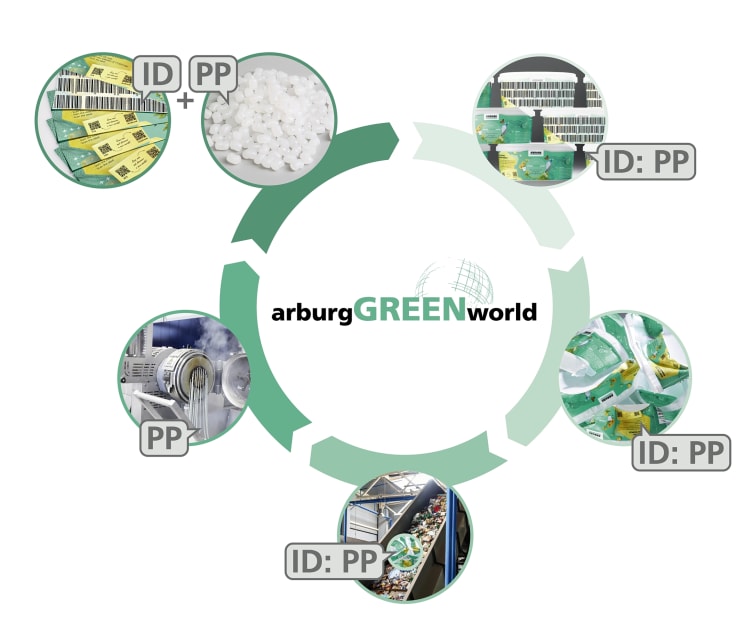
With its arburgGREENworld programme, Arburg is demonstrating its commitment to the circular economy and resource conservation. Work on innovative technologies for a closed-loop economy is forging ahead in collaboration with prestigious partners. These innovations include the “HolyGrail2.0” project for separating plastic packaging into homogenous types via digital watermarks. The project has recently moved to the next phase and since September 2020 is being taken forward under the auspices of the European Brands Association AIM. More than 85 companies and organisations from every stage of the value chain are involved in the project. Of these, Arburg is the only manufacturer of injection moulding machines.

“As early as the pilot project phase of HolyGrail, we were able to demonstrate the fantastic potential of the digital watermark technology based on the example of IML containers made from mono-material,” explains Bertram Stern, Packaging and Circular Economy Manager at Arburg. “It is now all about rolling out the project across Europe with the aim of using this technology for the homogenous sorting and separation of plastic packaging on a large scale as well as to facilitate smart and cost-effective recycling.”
Initiative combining the know-how of more than 85 partners
Arburg is involved in various working groups as part of the Europe-wide project, which was launched in September 2020 and is due to be completed in the summer of 2022. The AIM is coordinating activities from its headquarters in Brussels, in compliance with current EU legislation. “Lively discussions with associations and prestigious partners including Beiersdorf, Dow, Henkel, Nestle and Sick are creating significant momentum. By working together we will succeed in moving HolyGrail2.0 forward effectively,” says Bertram Stern with confidence. Once a packaging concept has been developed, the semi-industrial test phase is scheduled to start in the spring of 2021. The EU legislation foresees that by 2030 all plastic packaging across Europe will be reusable, easily recyclable or compostable. The target reprocessing and recycling rate is 60 per cent.
Intelligent sorting with a digital watermark
Efficient and high-quality recycling relies on plastic waste being collected appropriately and separated in the most effective way. Furthermore, all industrial processes forming part of the materials cycle must be digitised and interlinked. This is exactly where the HolyGrail2.0 initiative for digital watermarks on packagings comes in.

The digital watermarks are codes the size of postage stamps which are applied directly to the surface of a product or to its label but are not visible to end users and consumers. The individual tile patterns are created through micro-topological variations in the carrier material and multiplied to create a graph which resembles a mosaic. They create a “digital passport” of which a fragment is enough to call up information about the manufacturer, for example, or about the materials processed and whether or not the packaging is suitable for food. High-resolution cameras built into sorting equipment read out the information from the digital passport. At supermarket checkouts or for end users and consumers, this information is read out by scanners or using an app on a mobile device. This technology provides a means of querying all kinds of additional information (including about availability, use or disposal, for example) throughout the entire service life of a product.
Application example: IML containers made from mono-material
Arburg has been working intensively for some time now to gain experience of the technology based on digital watermarks. In the pilot phase of HolyGrail, the packaging version of a hybrid Allrounder 820 H was able to produce pairs of IML containers made from bio-based PP in a cycle time of 5.8 seconds. An IML automation system inserted the associated PP labels from partner company Verstraete and removed the finished parts at the same time. The labels contained the digital watermarks. Information about the contents of the mono-material packaging as well as the use and disposal of the product could be queried via the corresponding app.

As Allrounder injection moulding machines are generally suitable for processing recyclates from household waste (PCR) or industry (PIR), Arburg has already presented and demonstrated a number of examples of possible ways of returning plastics to the circular economy once they have been separated securely into homogenous types. The challenge now is to find ways of upscaling this technology.




